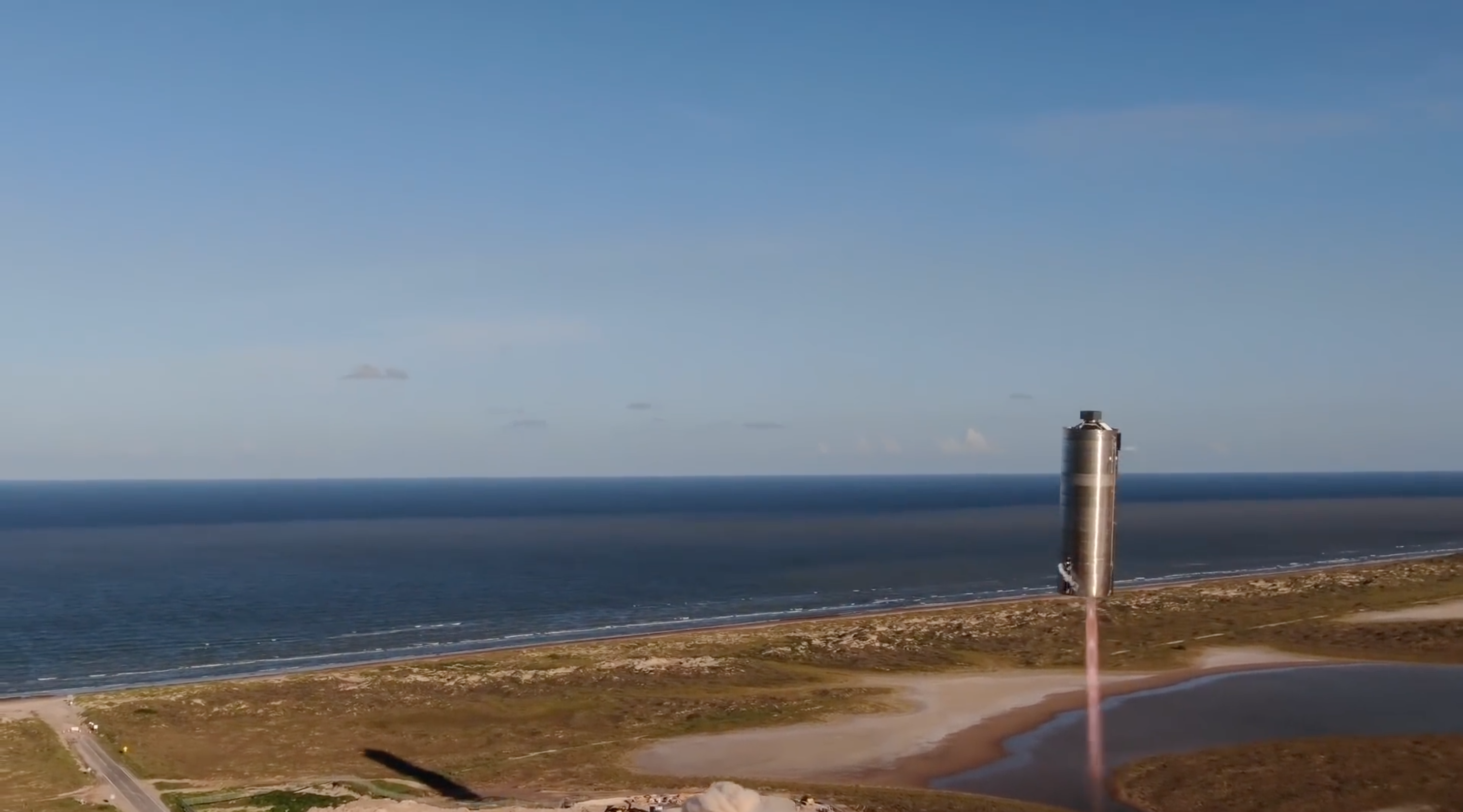SpaceX flew a prototype of its Starship vehicle for the first time

SpaceX successfully flew a prototype of its next-generation Starship vehicle for the first time ever on Tuesday, a major step forward in the company’s quest to eventually send people to Mars.
What happened: Around 8:00pm Eastern Time, from its testing site at Boca Chica, Texas, SpaceX flew the prototype about 500 feet into the air (the company has not yet stated what the exact altitude of the test flight was.) After “hopping” into the air, the vehicle skirted sideways a little before coming back to the ground, deploying six landing legs before successfully descending. The whole flight took about 45 seconds.
Called SN5, and with just one of the company's powerful Raptor engines, this vehicle is a long way from the version SpaceX is hoping to build down the road. In its final form, Starship is expected to be about 400 feet tall and 30 feet wide, able to take more than 100 tons worth of cargo and passengers to deep space destinations like the moon and Mars. When it flies, it will do so with six of the same engines, on top of a giant rocket booster called Super Heavy.
Better late than never: Four previous iterations of the Starship prototype were destroyed during failed ground testing. This is the first time SpaceX has managed to get a prototype to survive engine fires, let alone get off the ground. It is also the first time the company has flown a full-sized version of the vehicle. A smaller prototype called Starhopper was flown as high as 490 feet last year.
What’s next: SN5 may fly again, but the company has already build a sixth prototype which is expected to be tested under more rigorous conditions, possibly to an altitude higher than 500 feet. Starship is a long-term project that’s already behind a schedule. Company CEO Elon Musk had stated he wanted to fly Starship 12 miles into the air within just a couple months when he first unveiled the design last September, and that it would fly into orbit within half a year. The reality on the ground has failed to meet those ambitions.
Want to stay up to date with space tech news? Sign up for our newsletter, The Airlock.
Deep Dive
Space
How to safely watch and photograph the total solar eclipse
The solar eclipse this Monday, April 8, will be visible to millions. Here’s how to make the most of your experience.
The great commercial takeover of low Earth orbit
Axiom Space and other companies are betting they can build private structures to replace the International Space Station.
The race to fix space-weather forecasting before next big solar storm hits
Solar activity can knock satellites off track, raising the risk of collisions. Scientists are hoping improved atmospheric models will help.
Stay connected
Get the latest updates from
MIT Technology Review
Discover special offers, top stories, upcoming events, and more.